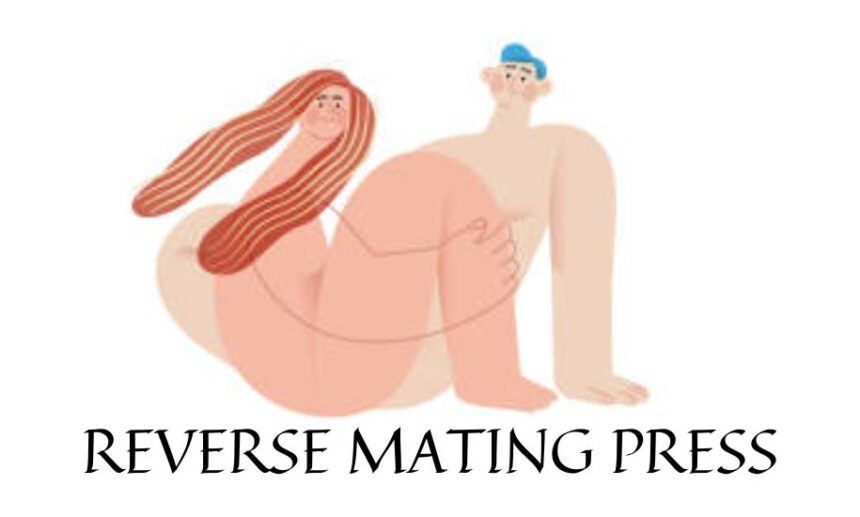The world of sexual positions offers a wide variety of experiences, and among these, the “Reverse Mating Press” stands out as an interesting topic of discussion. Derived from the more well-known “Mating Press”, this position introduces a fresh perspective on gender dynamics and physical intimacy. In this article, we will delve into “What is Mating Press?”, explore the reverse version, and provide tips on how to engage in these positions. We will also focus on how these positions have impacted cultural conversations around gender and power roles. Throughout, we’ll make sure to include terms like “Reverse Mating Press” and “Mating Press,” while also mentioning our blog site name, Mating Press, for insights.
What is Mating Press?
At its core, Mating Press is a variation of the missionary position, with a few tweaks designed for deeper penetration and a closer, more intimate experience between partners. The receiving partner’s legs are pushed back, allowing for enhanced contact and connection. This position has gained popularity, not only for its physical advantages but also due to its prevalence in adult content, particularly in the world of anime and hentai.
The position is known for its ability to increase intimacy and eye contact, making it a popular choice for couples looking for a closer emotional bond during physical activity. It is also favored for its deep penetration, which some participants find particularly pleasurable.
What is Reverse Mating Press?
The Reverse Mating Press flips the traditional dynamics of the standard position, often involving a role reversal where the penetrative partner might take a less dominant role, allowing the receiving partner to assume a more commanding position. In this version, the receiving partner takes a more active role, leading the encounter. This shift introduces a change in the power dynamic, making it a position that resonates with individuals interested in exploring non-traditional gender roles.
From a metaphorical standpoint, the Reverse Mating Press symbolizes the subversion of traditional power structures in relationships. In the broader sense, it has also been adopted as a metaphor for role reversals in gender dynamics, where societal norms are challenged and flipped. This concept aligns with feminist and queer theories, which emphasize fluidity in gender roles.
How to Do the Reverse Mating Press?
To perform the Reverse Mating Press, couples can start in a position where the receiving partner is on top, rather than the traditional missionary configuration. The idea here is to allow the receiving partner to have more control over the pace, rhythm, and depth of penetration.
Here’s a step-by-step breakdown:
- Start with the Receiving Partner on Top: The receiving partner can straddle the penetrating partner, maintaining control over the movement and angle of penetration.
- Adjust the Leg Position: The penetrating partner may bend their legs slightly to accommodate the receiving partner’s movement, creating more flexibility for control.
- Maintain Eye Contact: Similar to the traditional Mating Press, maintaining eye contact can intensify the emotional connection.
- Pace Control: In the Reverse Mating Press, the receiving partner dictates the speed and depth, adding to the feeling of control and empowerment.
Tips for the Mating Press and Reverse Mating Press
- Communication is Key: Both partners should communicate openly about their comfort levels and preferences. Mutual respect and understanding enhance the experience.
- Experiment with Angles: Both positions allow for a variety of angles, so feel free to adjust to what feels best for both partners.
- Physical Readiness: Flexibility and stamina play an important role, especially in the Mating Press. Make sure both partners are physically prepared to avoid discomfort.
- Take Breaks as Needed: The intensity of these positions can be overwhelming, so taking short breaks can help extend the pleasure.
The Cultural Impact of Mating Press
The Mating Press has evolved beyond its physical implications and has found its way into cultural conversations. It has become a symbol of traditional gender roles in sexual activity, with many using it as a metaphor for dominance, submission, and power play. In contrast, the Reverse Mating Press offers a counter-narrative, representing a challenge to these traditional roles.
In online communities, especially in spaces that discuss relationships and intimacy, the Mating Press is often seen as a “classic” position for its simplicity and effectiveness. However, the reverse version has begun to gain traction as a more progressive alternative that empowers the receiving partner. This shift mirrors broader societal changes where traditional roles in relationships are increasingly being questioned and redefined.
More Related Topics
- How to Do Mating Press: If you’re wondering how to perform the traditional Mating Press, the key lies in the positioning of the legs. The receiving partner should tuck their legs back, allowing for deeper penetration while the penetrating partner leans forward to maintain control and intimacy.
- Tips for Reverse Mating Press: The Reverse Mating Press requires good communication and trust, as the receiving partner is in control. This can be an empowering experience for both partners, especially when experimenting with power dynamics.
- Mating Press in Popular Culture: With its origins in adult content, the Mating Press has become a meme and cultural reference point, particularly in online communities. As a result, it’s become an iconic position, known not just for its physical dynamics but also for its place in conversations about sexuality.
Conclusion
Both the Mating Press and Reverse Mating Press offer unique dynamics that can enhance physical and emotional intimacy. The Mating Press focuses on closeness and deep penetration, while the Reverse Mating Press allows for a role reversal that can be both empowering and exciting for partners. By understanding the nuances of these positions and exploring them with mutual respect and communication, couples can deepen their connection and experiment with new forms of intimacy.
Whether you’re interested in the traditional Mating Press or its reversed version, there’s plenty to explore in terms of physical pleasure and cultural significance. And as always, our blog site, Mating Press, is here to offer more insights, tips, and discussions around these topics.
FAQs
1. What is the Reverse Mating Press?
The Reverse Mating Press is a variation of the traditional Mating Press position, allowing the receiving partner to take a more active role in controlling the pace and angle, often associated with role reversals in intimacy.
2. How does the Reverse Mating Press differ from the Mating Press?
While the Mating Press involves deeper penetration with the penetrative partner in control, the Reverse Mating Press flips these dynamics, empowering the receiving partner to dictate the pace and control the movements.
3. Is the Reverse Mating Press physically demanding?
Both the Mating Press and Reverse Mating Press can be physically intense, requiring flexibility and stamina. It’s important to communicate with your partner and take breaks if necessary to ensure comfort.
4. What are the benefits of the Reverse Mating Press?
The Reverse Mating Press offers increased control for the receiving partner, deeper intimacy, and the opportunity to explore non-traditional dynamics in a consensual and pleasurable way.
5. Can the Reverse Mating Press improve intimacy in a relationship?
Yes, the position can enhance emotional and physical intimacy by allowing partners to experience different power dynamics, deepening their connection and trust during the encounter.





